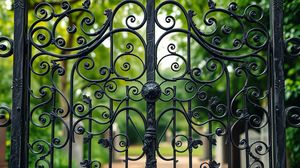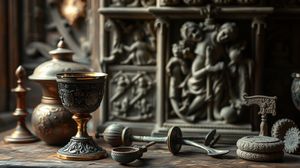
The Museum of Methodism, located at the historic Wesley's Chapel, provides a fascinating insight into the history and impact of Methodism, a significant Christian denomination founded by John Wesley in the 18th century. This museum preserves the story of the Methodist movement, which not only had religious significance but also played a crucial role in social reform across the United Kingdom and beyond.
One of the unique aspects of the Museum of Methodism is its location in Wesley's Chapel, built by John Wesley himself in 1778. The chapel remains an active place of worship today, and it is considered the mother church of World Methodism, making it a site of pilgrimage for Methodists worldwide.
A particularly interesting artifact housed in the museum is John Wesley's electric machine, which he used as part of his pioneering experiments to understand the uses of electricity in health treatments. This reflects Wesley's broader interests and his commitment to science and medicine as a means of supporting his community.
The museum's exhibits detail the social and political activities inspired by the Methodist movement, including efforts in educational reform, abolition of slavery, and the temperance movement. It provides visitors with a vivid depiction of how Methodism influenced society in influential and enduring ways.
An intriguing exhibit is John Wesley's ordination into the Church of England controversially depicted with a Lincoln Cathedral choir boy's surplice, symbolizing the blend and tensions between Methodism and Anglican traditions.
Visitors to the museum can also explore the adjoining Wesley's House, where John Wesley lived for over a decade. The house remains largely as it was in Wesley's time, preserving his modest living quarters and personal belongings, offering a tangible connection to his life and work.

Making the Most of Your Visit:
Take your time in Wesley's House. It's not just about the furniture; it's about stepping into the past. Imagine Wesley penning his sermons in that very space. His study and prayer room really give you a sense of his daily life and how he connected with his faith and community.
Don't miss John Wesley's grave and the adjacent historic burial ground at the back of the chapel. Reflect on the legacy of not just Wesley, but also many other prominent Methodists buried there. It's a peaceful enclave that offers a moment for contemplation.
Make sure to check out the visual timeline in the museum. It does a tremendous job of showcasing the chronological development of Methodism alongside major social reforms. This context really brings the narrative of the movement to life.
Keep an eye out for special temporary exhibitions. They often delve deeper into specific aspects or figures of Methodism, providing fresh insights even for those who might have visited before.
After your visit to the museum, drop by the chapel for a moment of quiet reflection or even one of the short midday services. The chapel itself is a marvel, an active part of Wesley's legacy that's still very much alive today.

Visiting Times & Costs:
The Museum of Methodism, located within the historical Wesley's Chapel, is open to the public and welcomes visitors who wish to explore the rich history of Methodism and its societal impacts.
Opening Hours:
- Monday to Saturday: 10:00 AM to 4:00 PM
- Sunday: Closed
Admission: Entry to the Museum of Methodism is free of charge, although donations are appreciated to help maintain the museum and its exhibits.
Accessibility: The museum strives to be accessible to all visitors. However, as it is part of a historic building, there may be some limitations. There are ramps and accessible pathways, but it is advisable for those with specific accessibility needs to contact the venue in advance to ensure a smooth visit.

Address & Map:

Nearby:























